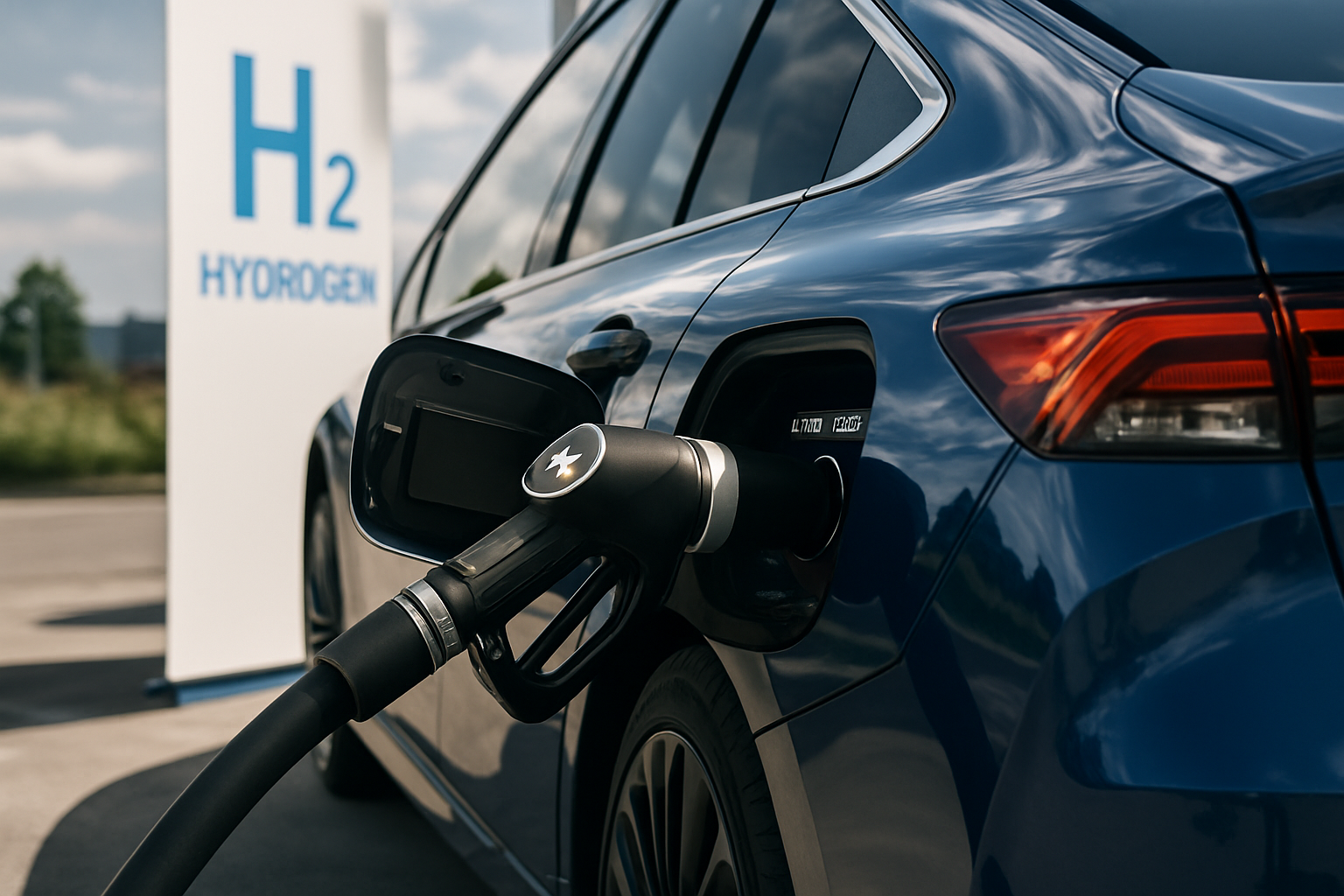Exploring the World of Hydrogen Fuel Cell Vehicles
The automotive industry stands on the brink of a revolutionary shift as hydrogen fuel cell vehicles emerge as a promising alternative to traditional combustion engines. This cutting-edge technology combines the eco-friendly benefits of zero-emission driving with the convenience and range of conventional gasoline-powered cars. But what exactly are hydrogen fuel cell vehicles, and how do they work? Let's dive into this innovative realm of automotive engineering and explore its potential to reshape our transportation landscape.

The process begins when hydrogen stored in high-pressure tanks is fed into the fuel cell. Inside, a catalyst separates the hydrogen molecules into protons and electrons. The protons pass through a membrane, while the electrons are forced to take a different path, creating an electric current. This current is then used to power the vehicle’s electric motor. Meanwhile, oxygen from the air enters the fuel cell and combines with the protons and electrons, producing water vapor as the sole emission.
Advantages of Hydrogen Fuel Cell Vehicles
One of the most significant advantages of FCVs is their quick refueling time. Unlike battery electric vehicles that may require hours to charge, hydrogen fuel cell cars can be refueled in a matter of minutes, similar to conventional gasoline vehicles. This feature makes them particularly attractive for long-distance travel and commercial applications where downtime is costly.
Another key benefit is the impressive range that FCVs can achieve. Many current models can travel over 300 miles on a single tank of hydrogen, rivaling the range of traditional gasoline-powered cars. This extended range, coupled with quick refueling, addresses one of the primary concerns consumers have with electric vehicles: range anxiety.
Furthermore, hydrogen fuel cell technology offers a clean alternative to fossil fuels. When powered by hydrogen produced from renewable sources, FCVs can be truly zero-emission vehicles throughout their entire lifecycle, from fuel production to vehicle operation.
Challenges Facing Hydrogen Fuel Cell Adoption
Despite their potential, hydrogen fuel cell vehicles face several hurdles on the path to widespread adoption. One of the most significant challenges is the lack of hydrogen refueling infrastructure. As of 2023, there are only a handful of hydrogen fueling stations available to the public in most countries, primarily concentrated in urban areas of California and Japan.
The production and distribution of hydrogen also present challenges. While hydrogen is the most abundant element in the universe, it rarely exists in its pure form on Earth. Current methods of hydrogen production are energy-intensive and often rely on fossil fuels, which can offset the environmental benefits of FCVs. However, research into more sustainable hydrogen production methods, such as electrolysis powered by renewable energy, shows promise for the future.
Cost remains another significant barrier to adoption. Fuel cell technology is still relatively expensive, making FCVs more costly than their gasoline or battery electric counterparts. Additionally, the price of hydrogen fuel itself is currently higher than gasoline on a per-mile basis, though this could change as production scales up and becomes more efficient.
The Role of Automakers and Government Policies
Several major automakers have invested heavily in hydrogen fuel cell technology. Toyota, with its Mirai model, has been at the forefront of FCV development and commercialization. Other manufacturers, including Hyundai, Honda, and BMW, have also introduced or are developing fuel cell vehicles.
Government policies play a crucial role in the adoption of new automotive technologies. Many countries have implemented incentives for zero-emission vehicles, including FCVs. For example, California offers rebates for fuel cell vehicle purchases and has invested in expanding its hydrogen fueling infrastructure. Japan, aiming to become a hydrogen-based society, has set ambitious targets for FCV adoption and hydrogen station deployment.
The Future of Hydrogen in Transportation
While passenger vehicles have been the initial focus of hydrogen fuel cell technology, the future may see its application expand to other areas of transportation. Heavy-duty trucks, buses, and even trains are being developed with fuel cell powertrains. These applications leverage the technology’s strengths: long range, quick refueling, and zero emissions.
The maritime industry is also exploring hydrogen as a potential fuel source for ships, which could significantly reduce the environmental impact of global shipping. Even aviation is considering hydrogen, with some seeing it as a possible solution for sustainable long-distance air travel.
As research continues and technology advances, we may see improvements in fuel cell efficiency, reductions in production costs, and innovations in hydrogen storage and distribution. These developments could accelerate the adoption of hydrogen fuel cell technology across various sectors of transportation.
In conclusion, hydrogen fuel cell vehicles represent a fascinating frontier in automotive technology. While challenges remain, the potential benefits of this technology – from environmental sustainability to performance and convenience – make it a compelling option for the future of transportation. As infrastructure expands and costs decrease, we may see hydrogen fuel cells play an increasingly important role in our journey towards a cleaner, more sustainable automotive landscape.





